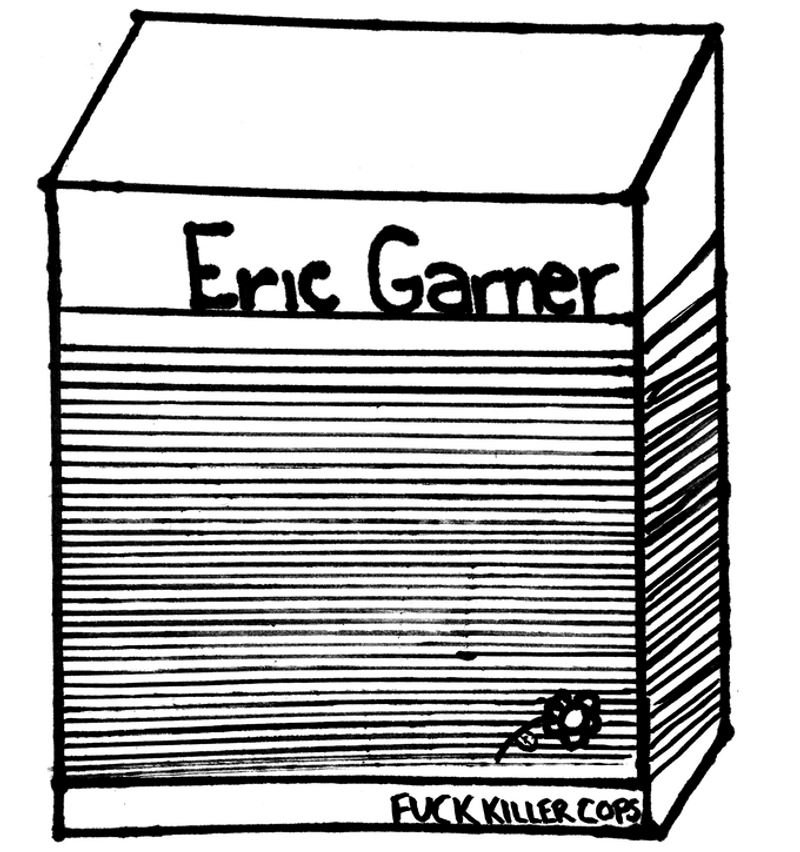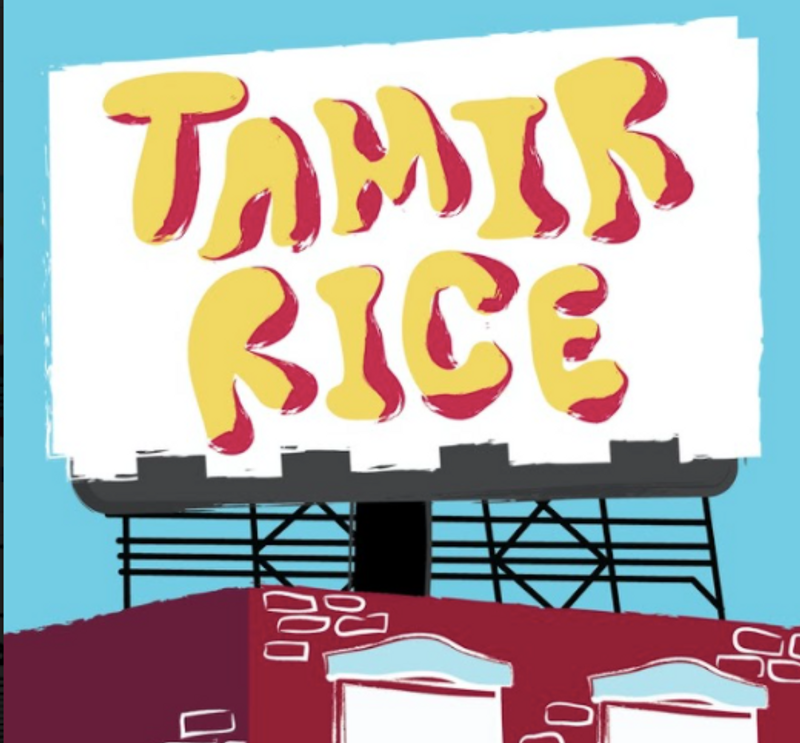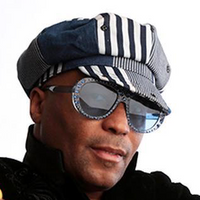On creating beautiful memorials
Prelude
Leslie Xia is a graphic designer and art director currently at Meredith’s The Foundry, working on projects like Millie, a magazine about money for women. They have previously worked at Men’s Health, Vice News, and Fast Company. In 2016, they ran the Say Their Name Kickstarter campaign to memorialize victims of police brutality. They have received recognition from the Society of Publication Designers, the Newswomen Club Front Page Awards, Print Magazine Regional Design Awards, and Fast Company Innovation by Design Awards.
This conversation is part of our Signs of Change series highlighting creators who have previously launched activist posters, broadsides, stickers, and zines on Kickstarter and encouraging newcomers to participate in Kickstarter’s open call for projects.
Conversation
On creating beautiful memorials
Artist and designer Leslie Xia on sharing accessible public art, why the personal is political, and ways to take care.
As told to Katheryn Thayer, 1840 words.
Tags: Activism, Design, Culture, Beginnings.
Take us back to what things felt like in 2016 when you launched “Say Their Name” and how you came into the project initially.
I went to MICA—the Maryland Institute College of Art—and graduated in 2015. And while I was in Baltimore, our graduating class experienced the Freddie Gray uprising in real time. It impacted us a lot and started many conversations within the school community. Many students attended protests. A lot of professors supported students going out to speak up about what was happening. During our graduation ceremony, every student and faculty member wore a patch that was lettered “Black Lives Matter.” A year later, when the Philando Castile and Alton Sterling killings happened, it just brought back so many feelings that I experienced during the Freddie Gray protests. I felt so, I guess, helpless at the time. I really wanted to offer something and realized that, through graphic design, it could help bring the #SayTheirNames movement off of the internet and into the real world, beyond just the protest itself.
I was trying to come up with a way to make it feel non-confrontational. How do we inject these names into everyday settings so that people can see the names and really remember and reflect on the humanity of each of these people? I reached out to a lot of my colleagues and other students who I went to school with who were in graphic design and illustration and each person took a name to letter. All of these students were also people of color. I cared a lot about making sure that they get the platform to create these names, instead of giving [the work] to a white person.

credit: Sean-Kierre Lyons and Leslie Xia
You mentioned you felt like there was value in bringing the “Say Their Name” conversation from online to physical places. What were some of the physical places that you ended up seeing these stickers and how do you think that was a different conversation than what you saw from the #SayTheirNames hashtag on Twitter?
I was super lucky, because of Kickstarter the reach of the stickers became global. I was mailing stickers out to people in London, Australia, and across the nation. So whenever people took photos, they would tag me on Instagram, send me images, or email me. It was mostly on walls, on poles, or posting them up during protests. And even now, I still get DMs or Instagram Story images of people putting them up when they are at protests. I think it’s a great way to put these names in areas where there are people who aren’t very critical about these issues—those people see these names and they’re like, “Oh, I don’t know who that is,” and they Google it, and they learn about what happened, and what is continuing to happen in this country. It’s another way to have this conversation.
How do you think it relates to the conversations we’re having now about taking down statues as a way to de-celebrate certain problematic historical figures? You’re putting some under-celebrated names in front of more people, kind of adding them to public history.
It’s a way of rewriting history and de-centering these people in a way that teaches people about how terrible colonialism has been and how we are continuing to uplift it. Even with naming—like in Manhattan, what’s been called Columbus Circle, that’s a deeply ingrained name, but we aren’t really acknowledging the roots of this person and the person’s impact. Now people in New York are starting to call it Indigenous Peoples Circle. We are actively working to change and acknowledge the whole history of this country.

credit: Heather Abbott and Leslie Xia
Why do you think that the Say Their Name approach is how we’ve ended up talking about police brutality and systemic inequality?
The impact of these murdered people and what they stand for is so important. They, I feel like, represent whole communities and all these underlying issues that are overlooked. I feel like wide ranges of people of color are standing up and standing in solidarity because of how racism affects all of us. It’s like we fight for one community because it affects all of us.
It seems to also deal with the erasure on the police brutality topic in general, like news outlets constantly using the passive voice to say, “A man was killed following confrontation with police.” You’re making these names visible, literally visualizing the names. What was your process for that? And why did that feel right?
We wanted to memorialize these folks in very beautiful ways. We wanted to create these beautiful works of art and associate these people as beautiful works of art themselves. Each of the artists, they all added their own touch, their own visual metaphors, their own beautiful styles to uplift these names through their artwork. I think when people see something beautiful on the street, it also triggers them to want to look at it more as well, or try to figure out the visual metaphors that they see within these names that they find.
You worked with artists of color—what other considerations did you make as a non-Black ally?
So whenever I shared the project itself or when I made the website, I put an emphasis on making sure that I highlighted the work as a team, rather than being like, “Oh, I did this.” And the project itself, I didn’t put on my own website. I feel like I didn’t want to claim it as my own project. So yeah, I refer to it as a whole, and I try to decenter myself from it.
What did you learn along the way? Were there things that maybe you didn’t go into the project knowing or adjustments you made along the way? Feedback that came up?
One major question I got from a few friends was whether I reached out to the families. When I heard that, I was like, “Oh yeah, that’s important because what if they aren’t into this idea?” But at the same time, I feel like these names have also now entered history. These people now are a part of this movement and it sucks because they didn’t choose to be, but these folks now are representing this whole larger problem. But I tried hard to find connections and emails to folks related to these families. I was able to connect with Korryn Gaines’s sister and Akai Gurley’s aunt and was able to send them collections of stickers—they were appreciative of the project.

credit: Luisa Rodriguez and Leslie Xia
Any other advice for non-Black creators dealing with this topic?
Definitely do your research first. Before you do anything, do your research. After you’ve done your research, consult friends, consult people who may be more knowledgeable than you about these subjects. When I started doing this project and I reached out to my group of friends who ended up collaborating with me, I asked a lot of questions. I met with people to sit down and have lunch together to go through the logistics of, “OK, what does this project mean to you? What should we look out for?” Then after we launched the project, we had a debrief meeting to talk about what we felt the impact was.
And on the more practical side of things, are there pieces of advice you have about production or distribution?
When I first started it, I wanted to keep costs really low so I reached out to a lot of different sticker manufacturers for quotes. I also asked if these companies wanted to sponsor the project itself so we could produce more stickers. The company that I ended up ultimately going with was Sticker You, because they were extremely welcoming and excited about the project. There were a few printers who were like, “We don’t want to be associated with this.”
Really?
Yeah. I think they were like, “Oh, this is very political. We don’t know if we want to be a part of this.” But I feel like now, the rhetoric around this has changed. Back then, in 2016, the NFL stood against it, but now their position has changed. I think the conversation has really progressed since then.

credit: N’Deye Diakhate and Leslie Xia
Despite that, there’s still so much more work left to do here. Four years later, we’re still out here trying to say the names. How do you stay motivated to do the active work on a personal level? How do you find the emotional strength to continue to do this work?
Yeah. I mean, for me, I’m a queer person of color, and I feel like I am always running into racism every day—or at least people judging or generalizing about me. So I think for me to want to speak up and say something, it’s like I feel like I’m constantly motivated because the personal is political. I feel like when it comes to marginalized people, these are our lives. So it’s an interesting dichotomy…on Twitter right now the term “allyship fatigue” is trending. People who aren’t constantly facing these issues are wondering how to stay motivated.
For people of color, for marginalized folks, the conversation is like, “How do we care for ourselves during this?” It isn’t, “How do we stay motivated?” but, “How do we step back from it?” Because it’s now barraging us constantly even more. And I guess self care is important: knowing to hold your community, knowing when to disconnect from the internet, making sure your people are okay first.
Specifically for you, how do you do that?
I play with my dog a lot. I make sure that my sister and my partner are okay. We’re all going through it right now. I mean, especially during the time of COVID, it exacerbates everything.
Lastly, what encouragement do you have for people who feel worn out, who need to keep themselves well taken care of and replenished for this?
It’s okay to just take a step back. Go out in nature. Do something else. Because this work, it takes a huge toll. Do whatever brings you joy. Call your mom. Stay connected to the people you love. Surround yourself with community if you can—I know it’s hard right now.

5 Say Their Name collaborators to watch:
- Name
- Leslie Xia
- Vocation
- Artist and designer
Some Things
Pagination



